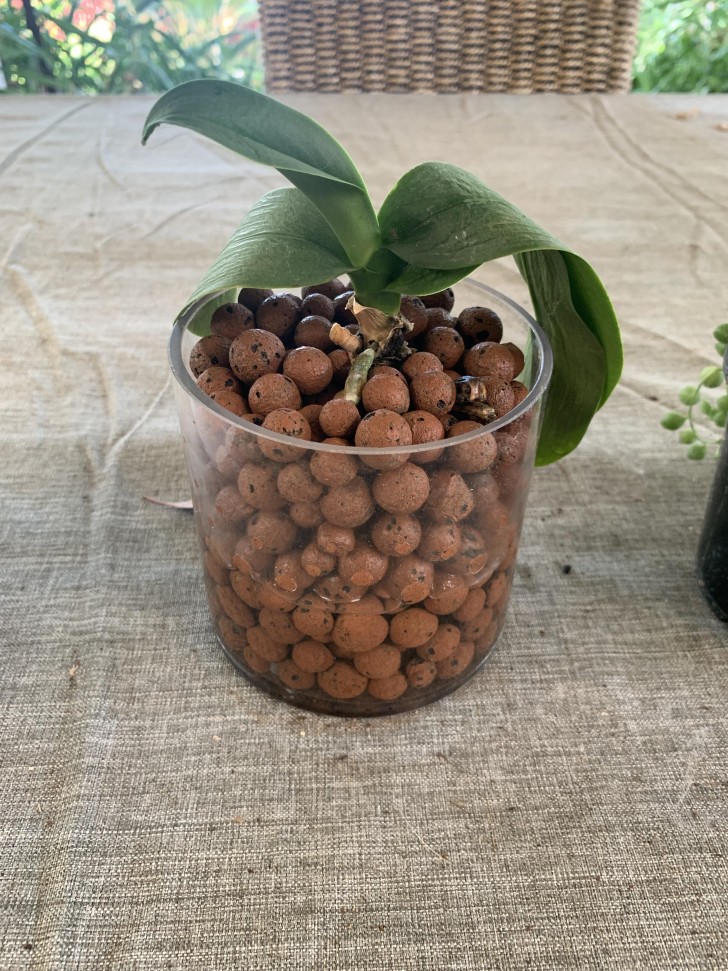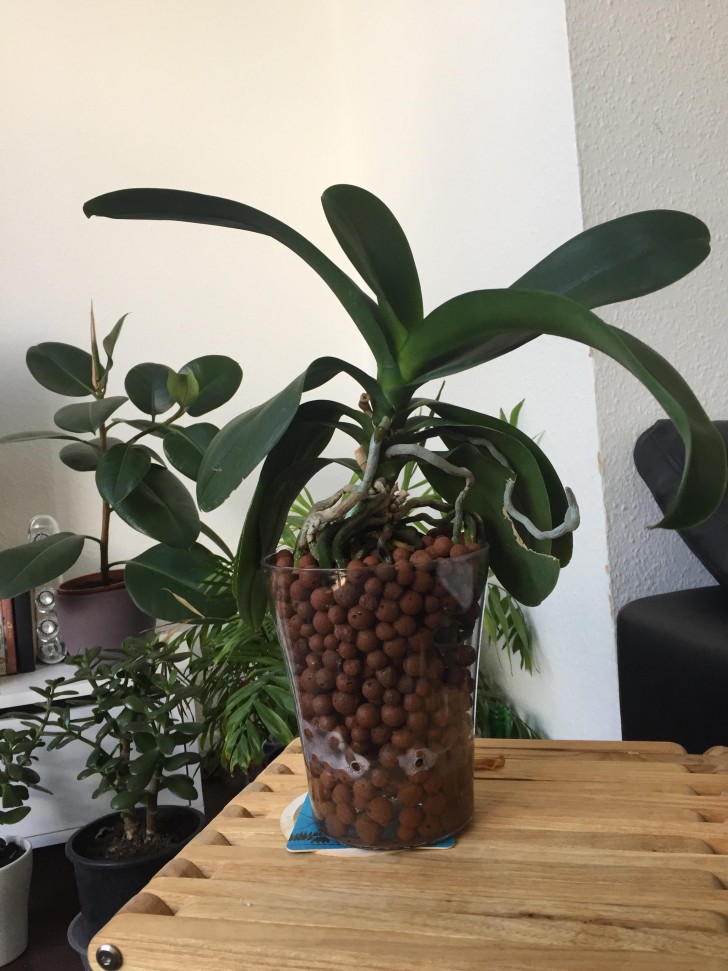Orchids and hydroponic cultivation: transitioning orchids from soil to water

Hydroponics or hydroculture is a cultivation technique that does not use soil, and has plants growing exclusively in water. This cultivation technique is very simple and can be applied to numerous plants - in particular to all epiphytic plants (i.e. those that grow in nature without soil, clinging to tall trees and drawing their nutrients from water and air).
Orchids of the Phalenopsis genus are epiphytic plants and are therefore perfectly suited to hydroponic cultivation. There are a few simple measures that you will to take to transition your orchids to hydroponic cultivation. This involves using expanded clay or perlite (which transports water to the roots by capillarity action).
So, what is the transition process in detail? Well, keep reading:
Orchids and hydroponics: preparation and transplantation

To transition your Phalenopsis orchids to hydroponic cultivation you will need the following:
- transparent vase for hydroculture - alternatively, use a perforated plastic vase or a ricotta basket to insert into a larger, closed plastic vase;
- expanded clay or perlite;
- scissors;
- fertilizer for hydroponics.
The first thing to do is to sterilize your instruments. Use a clean cloth or cotton ball soaked in alcohol and wipe it over the all the surfaces of the vases and the scissors.
Once done, it is time to prepare the orchid: remove it from the soil and clean it carefully, passing it under running water to wash away any loose bits. Then proceed to clean the roots, removing any rotten or dry ones using the sterilized scissors. Carry out this step very carefully, making sure you eliminate any roots with parasites, mold or rot.
Once done, fill the perforated pot with perlite to the halfway mark; then insert the orchid, carefully placing the expanded clay between the roots and adding more until the pot is completely filled (to a height of approximately 2 cm from the top).
Orchid and hydroponics: final steps

For the orchids to be able to feed themselves, the roots must get to the water and for this to happen, put about 2 centimeters of water into the pot so that the clay can transport it to your orchid by capillarity action.
One aspect to take into account for the hydroponic cultivation of orchids is fertilization; perlite is an inert substrate devoid of nutrients and so, only water will get to the plant. For this reason, it is important to also add liquid fertilizers.
You can simply buy a liquid fertilizer and there are several you can find in shops and online. Alternatively, you can prepare a DIY liquid fertilizer by boiling banana peels or potatoes. You can also use rice cooking water (as long as it is not salty), or infuse 4 green tea bags in 500 ml of water to use as fertilizer.